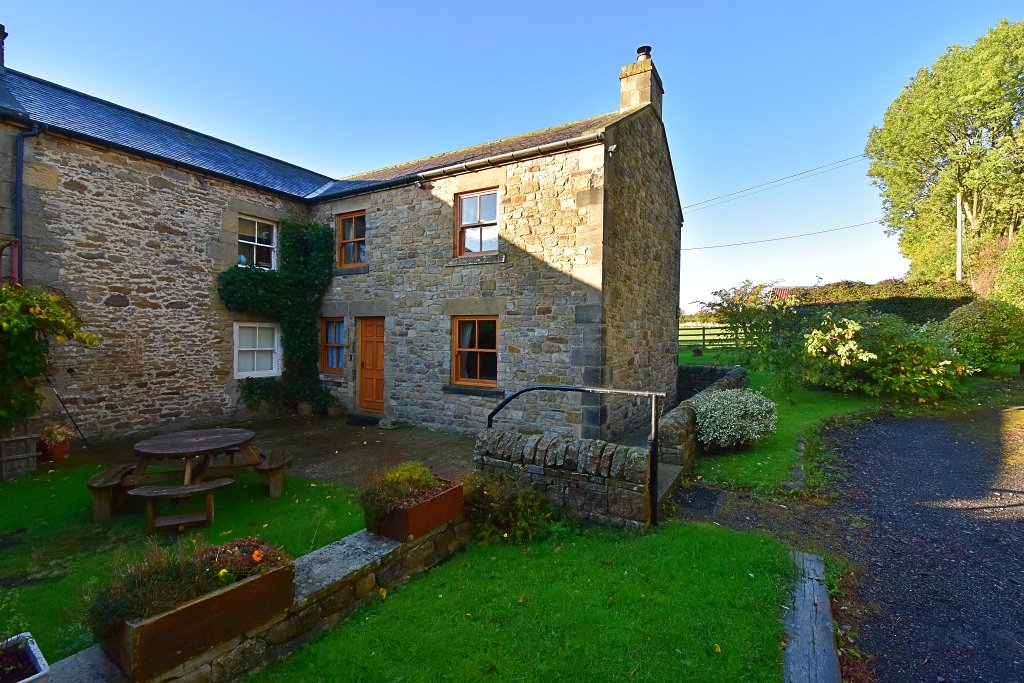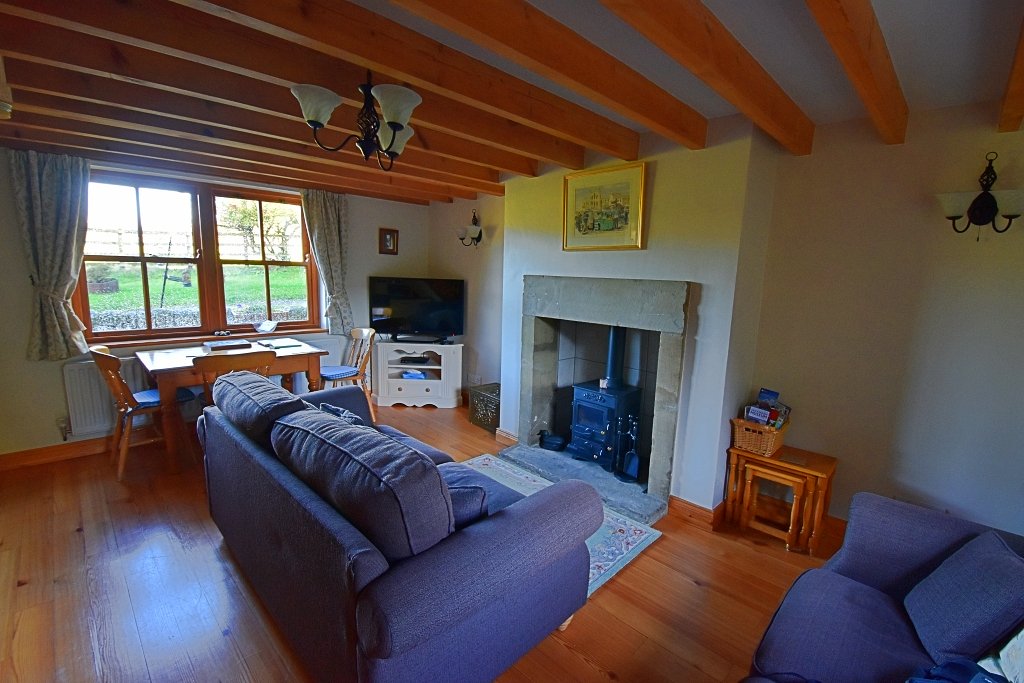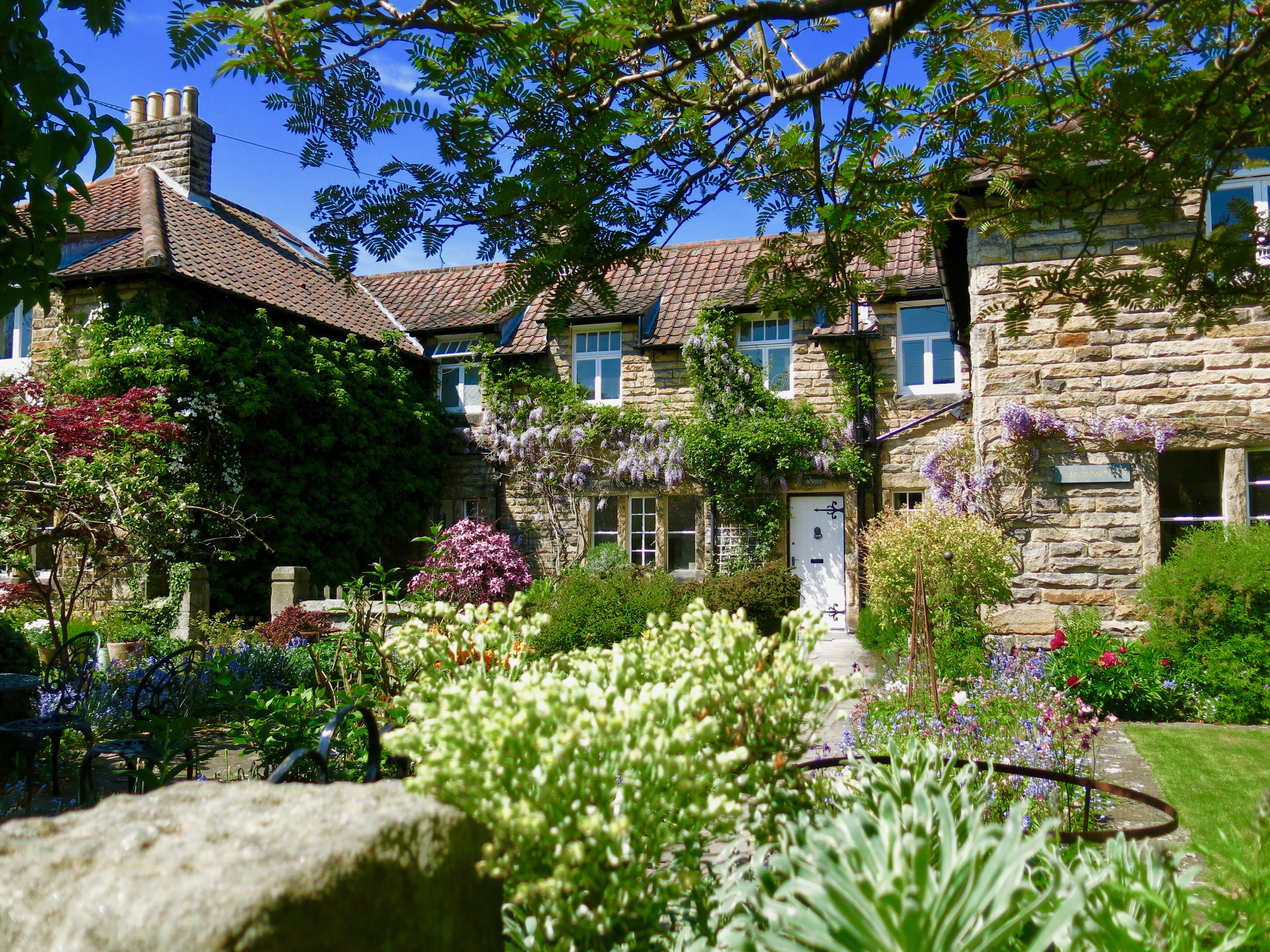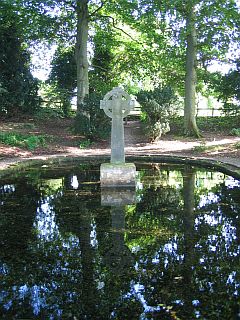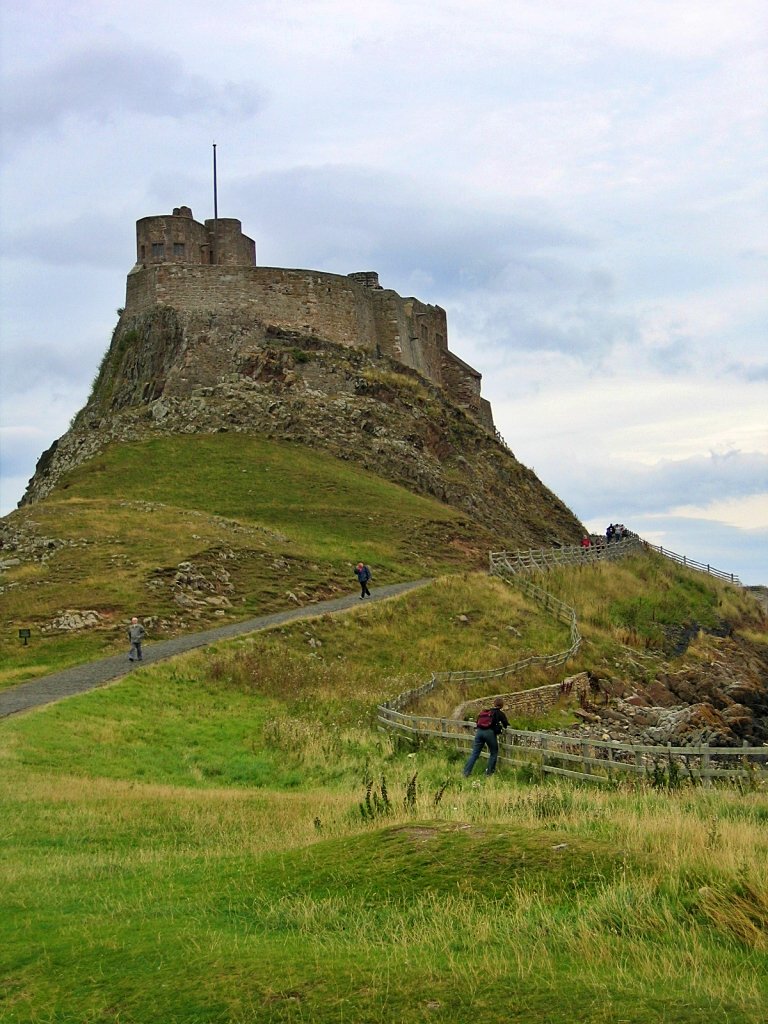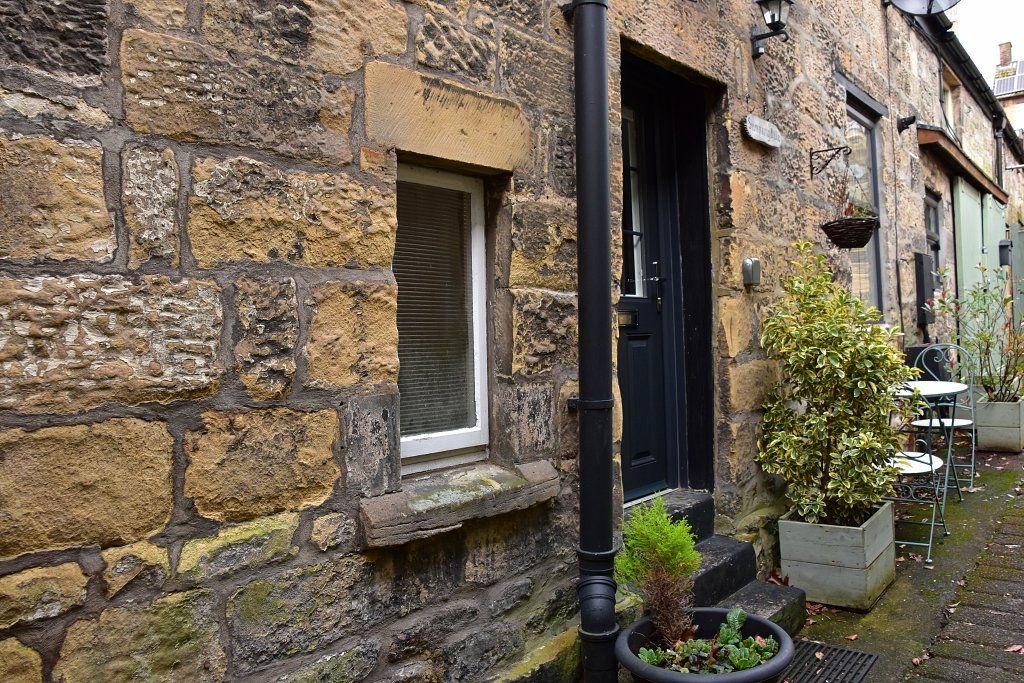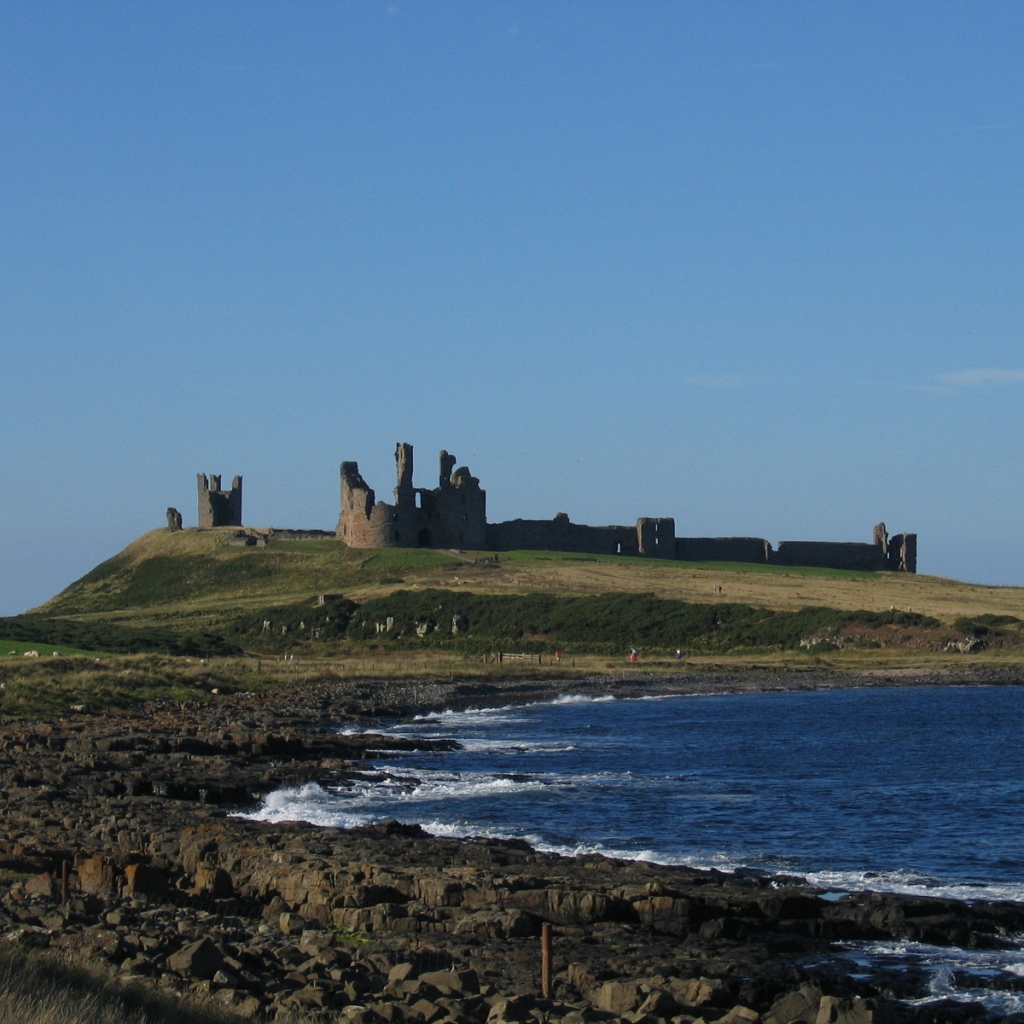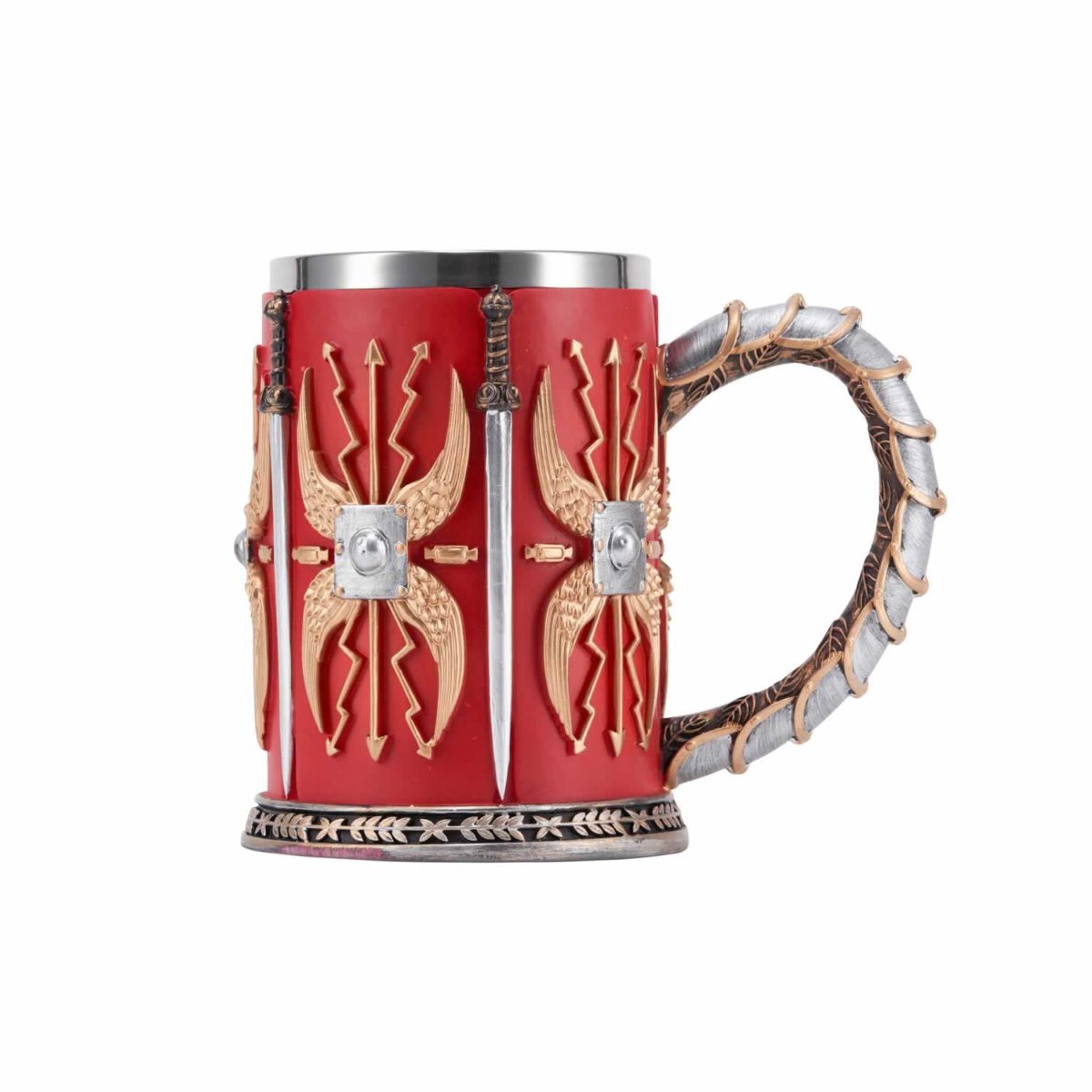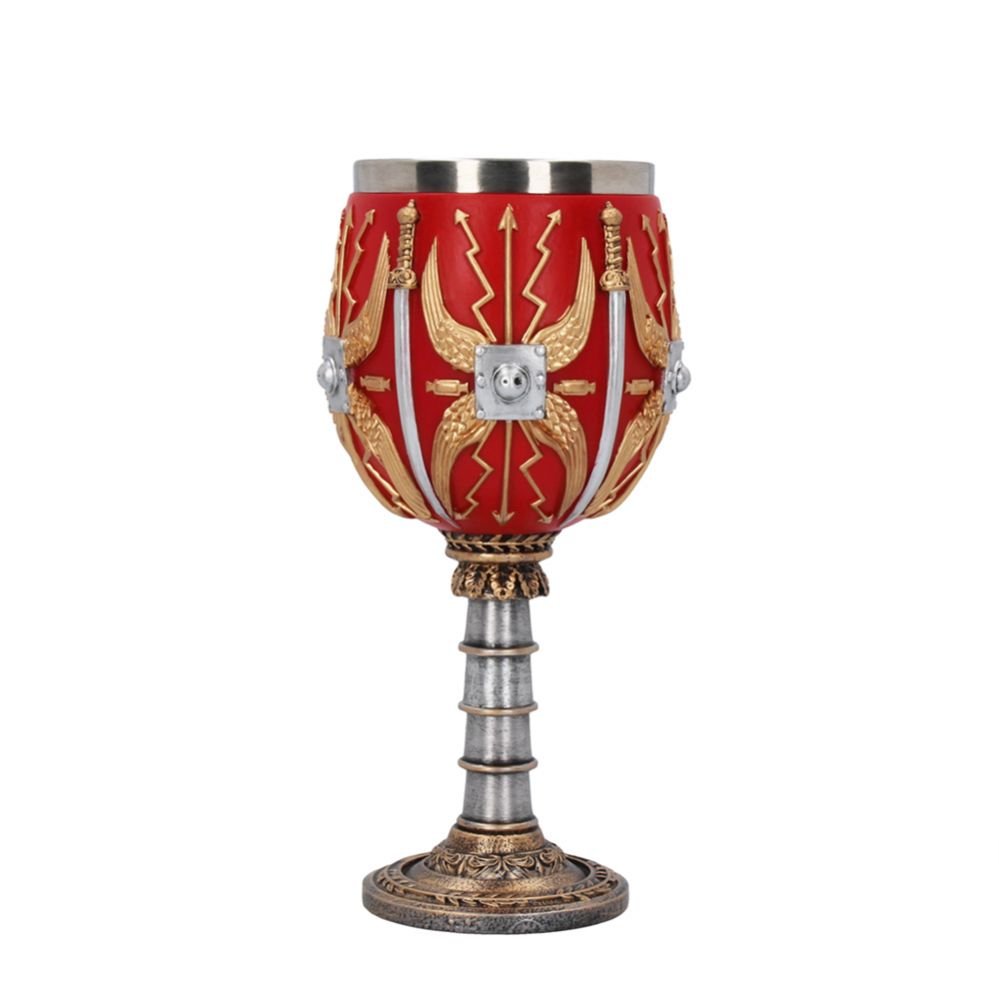Carrawburgh Fort and Temple of Mithras
Out in the remote Northumberland countryside lie the little excavated Roman site of Carrawburgh Fort and Temple of Mithras. High up and surrounded by moorland, this settlement is really exposed, and the stunning views extend far and wide. Carrawburgh Fort, or Brocolitia as it was in Roman times, was one of the last forts built along Hadrian’s Wall and it was positioned to strengthen the defences between Chester’s and Housesteads Forts.
We squeezed in a quick look between our visits to Chester’s Roman Fort and Corbridge Roman Town. It was one of those wet showery days with sudden bursts of heavy rain which made us rush even more as we didn’t fancy a drenching in this wild and windy place. The ground around here is a bit boggy and muddy at the best of times, so make sure you wear sturdy shoes as it was quite slippery!
For information on opening times and events refer to the English Heritage website.
Carrawburgh Fort and Temple of Mithras is signposted along the B6318 Military Road. For SatNav users, use the postcode NE46 4DB and follow the brown road signs to find the well-surfaced pay and display car park. It may get busy here in the high season as it is a good starting point to explore this part of Hadrian’s Wall on foot.
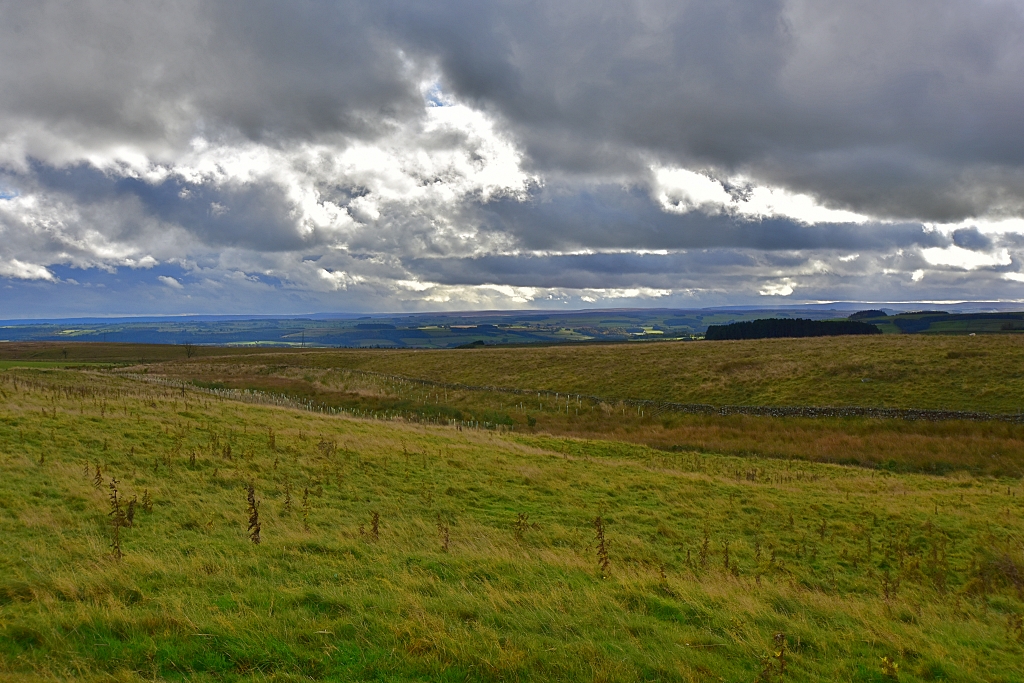 The Wild Landscape Around Carrawburgh Fort and Temple of Mithras © essentially-england.com
The Wild Landscape Around Carrawburgh Fort and Temple of Mithras © essentially-england.com
Aerial View of Carrawburgh Fort and Temple of Mithras
The Roman settlement consists of Carrawburgh Fort, the Temple of Mithras, the vicus, or village, that grew up on the west side of the fort, and Coventina’s Well whose location is not really given, but is in a very boggy part of the landscape. The fort was built right up against Hadrian’s Wall which is now hidden beneath the B6318 road.
The fort is all turfed and grown over and, on our visit, finding any distinguishing lumps and bumps was made harder by the tall grass. The same could be said for the view over the land of the vicus. The temple was a short and slippery walk around two sides of the fort and was an atmospheric find.
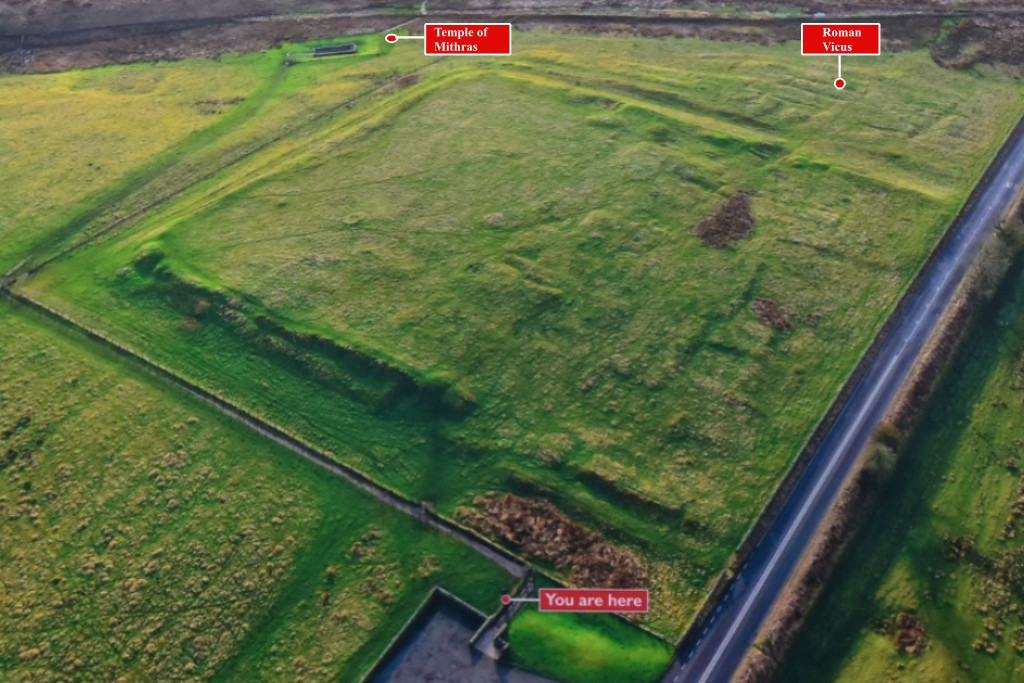 Aerial Photo of Carrawburgh Fort and Temple of Mithras (Photo taken of English Heritage information Board) © essentially-england.com
Aerial Photo of Carrawburgh Fort and Temple of Mithras (Photo taken of English Heritage information Board) © essentially-england.comCarrawburgh Roman Fort
Carrawburgh Roman Fort was built around the year 150 and encloses an area of about 3.5 acres, which would have been able to house a unit of 500 soldiers. The fort was protected by a thick, high stone wall with a rampart behind it and surrounded by defensive ditches outside it.
Archaeologists have been able to identify the gates and the positions of the barracks, granaries, strong room, and headquarters buildings within the fort. However, this is all still buried under the turf!
The vicus, or village, that grew up beside the fort covers about 10 acres of land. Surveys of the buried remains show various streets and plot and building boundaries. The buildings would have included housing, shops, workshops, inns, and temples. Much of this area has not been excavated.
The Temple of Mithras
The cult of Mithras was a secretive religion that spread across the Roman empire from the first century. At the heart of the cult was the mythical scene of Mithras killing a sacred bull inside a cave and feasting with the sun god, Sol. Religious meetings were male-only affairs and held in windowless temples which were often built below ground level to resemble a dark cave.
The cult had a graded hierarchy with promotion gained by the successful completion of physical and/or mental tasks and is probably why it was so popular among the Roman soldiers.
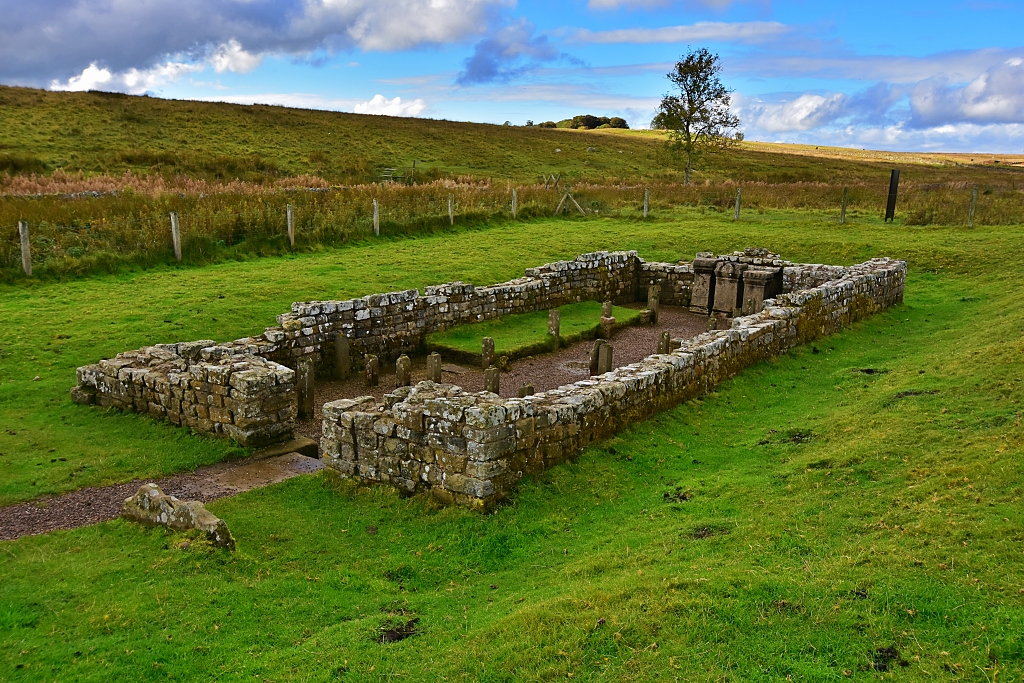 The Temple of Mithras at Carrawburgh Roman Fort © essentially-england.com
The Temple of Mithras at Carrawburgh Roman Fort © essentially-england.comThe Temple of Mithras at Carrowburgh Fort is a small rectangular building with just a single entrance. It was probably built by Roman soldiers around the year 200 and excavations suggest that it has been modified or refurbished several times. Three altars were found in the temple dedicated by three commanding officers from the fort. What you can see in the temple now are replicas, with the original altars on display in the Great North Museum in Newcastle.
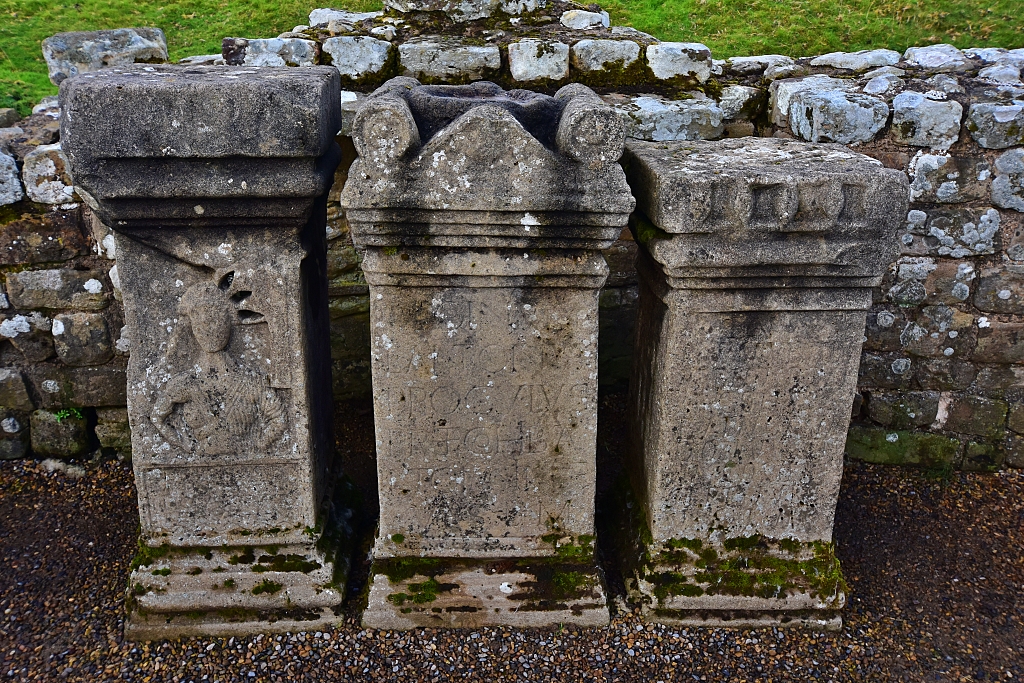 Copies of the Three Altars Found in the Temple of Mithras © essentially-england.com
Copies of the Three Altars Found in the Temple of Mithras © essentially-england.comCoventina’s Well
Excavations along the valley of the small stream of Meggie’s Dene Burn have revealed more about the site. At the head of the valley, Coventina’s Well was discovered in 1876 and thousands of offerings were found within the stone enclosure of the spring. These included 16,000 coins, two devotion tablets to Coventina, ten altars to Coventina and the goddess Minerva, sculptures, clay incense burners, and many other meaningful objects. Some of these offerings we saw earlier in the day when visiting the Clayton Museum at Chester’s Fort.
At least two more shrines and a bath house have also been uncovered along the valley!
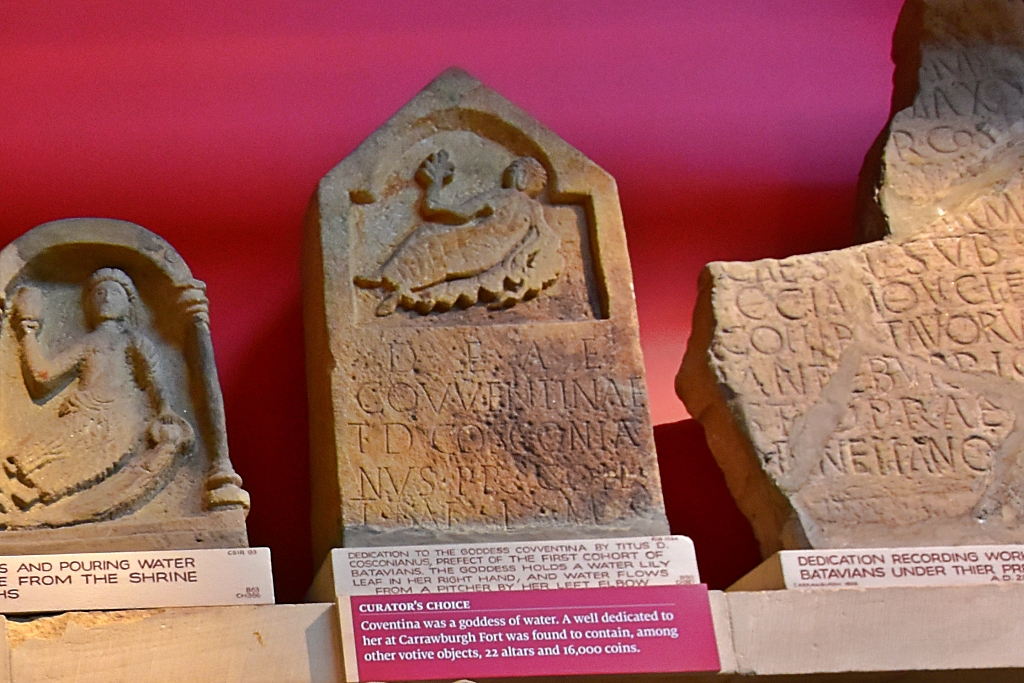 Dedication to the Goddess Coventina Found in Coventian's Well and on Display at Chester's Fort © essentially-england.com
Dedication to the Goddess Coventina Found in Coventian's Well and on Display at Chester's Fort © essentially-england.comWhere we Stayed:- Moorgair Cottage near Slaley
We stayed in Moorgair Cottage near Slaley which was very convenient for visiting Hadrian's Wall and its many Roman sites as well as Hexham, Corbridge, and Heavensfield. From the visitors book we also understand there are terrific walks out to Blanchland and back. It was a beautiful cosy cottage, and we would highly recommend to anyone staying in the area.
Are You Planning to Visit Northumberland?
Where You Could Stay
There's a reason Northumberland is one of my favourite English counties. Its landscape is utterly gorgeous with long beaches and empty sweeps of hills that just beg to be walked. In between you can find small towns and pretty villages, conntected by lanes that are great on the bike as long as you have the legs for climbing. And there are holiday cottages to suit all tastes and budgets.
To see other holiday cottages in Northumberland click here. Or check out holiday cottages in other parts of England by clicking here.
Or you could try a family orientated Parkdean Resort in Northumberland.
If you need to find a hotel, then try one of these search platforms...
What You Could See and Do
Even if you stayed a month, you'd find that you don't have enough time to explore the county top to bottom and see everything it has to offer. There's plenty of history from Hadrian's Wall near Hexham to Lindisfarne in the north with reams of castles and ruins in between. There are beaches and seaside towns like Craster, Alnmouth and Seahouses - and some of the best fish & chips in all of England. There are market towns like Haltwhistle, Rothbury, Bellingham, Berwick, Warkworth and Harbottle to explore. And there are hillsides to climb and the great outdoors to enjoy.
Are you feeling in need of a holiday yet? Here are a few more pages that might give you ideas...
- Hadrian's Wall
- Berwick-upon-Tweed
- Alnwick Castle
- The Holy Island of Lindisfarne
- Take a stroll on the beach at Alnmouth
- Visit Alnwick with its famous castle and the cosy Barter Books bookshop
- Warkworth Castle
- Dunstanburgh Castle
- Cycling in Northumberland - my favourite tandem tour EVER!
- Spend the day exploring Cragside, near Rothbury, the worlds first home to have lighting powered by hydro-electricity
- Walk the St. Oswald's Way starting from Heavenfield and finishing at Lindisfarne
And if you want to explore more of Northumberland and its martial history, check out this Northumberland Castle Tour.
